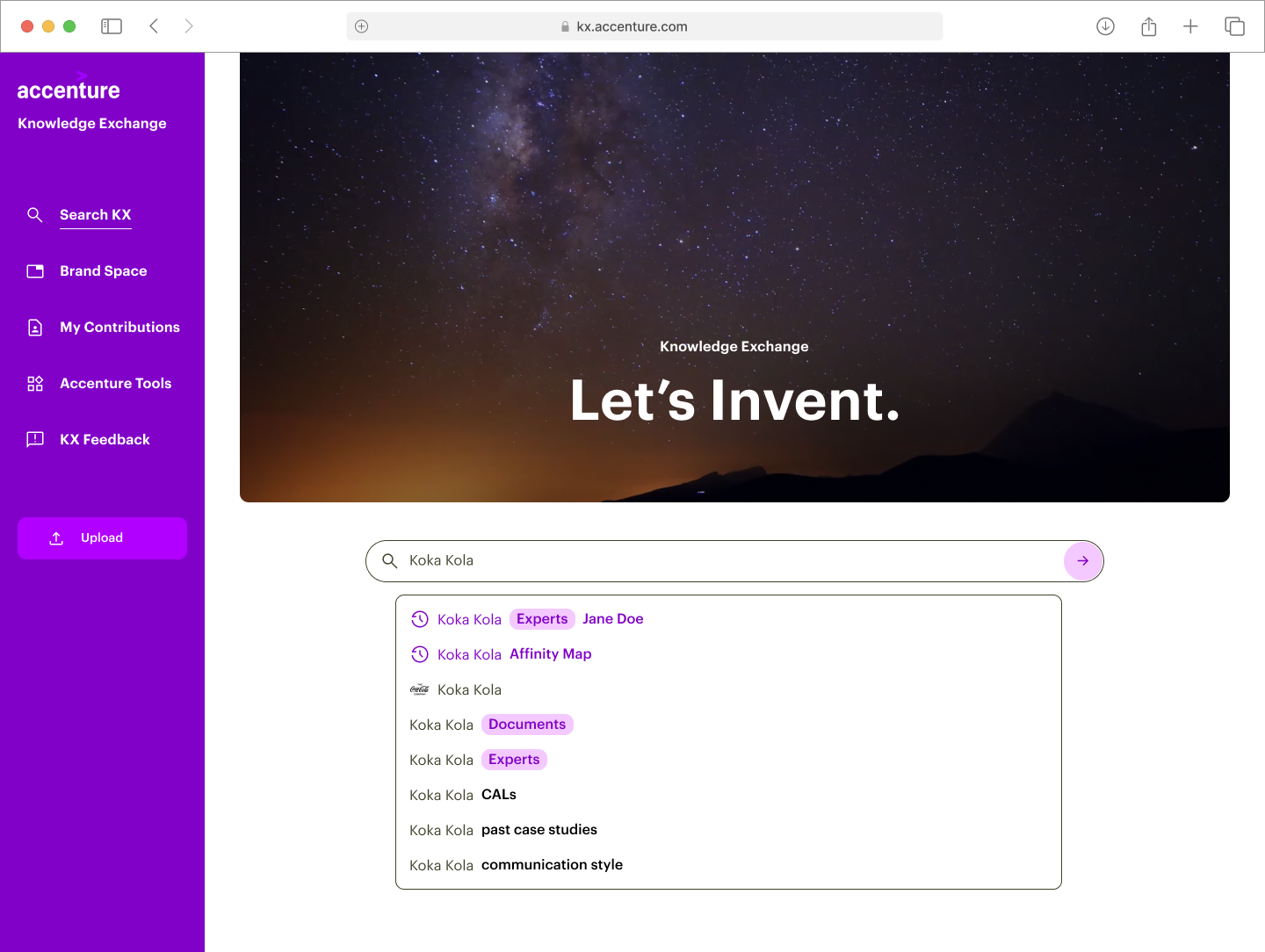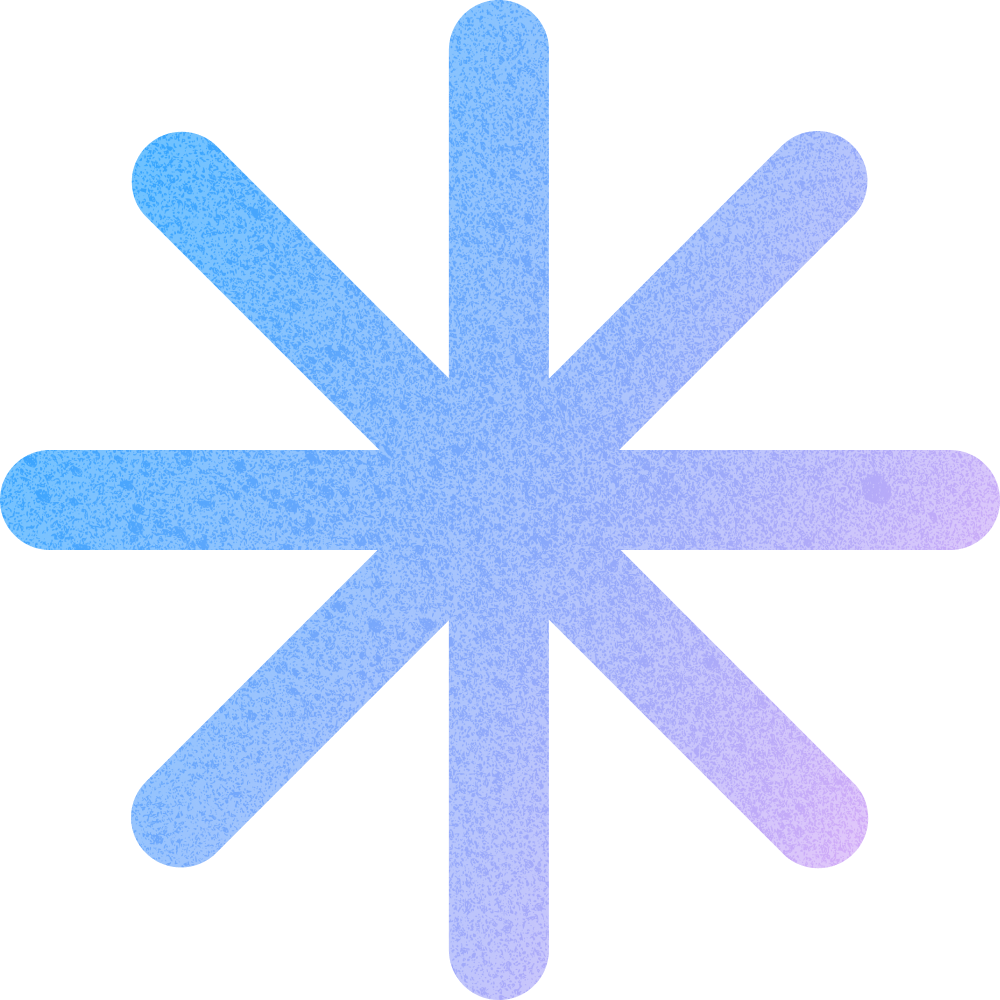Problem Overview
Accenture consultants struggle with gathering research quickly due to scattered client information.
Problem
There is a lack of a centralized tool for accessing client information within Accenture Song or other divisions. This fragmented approach makes it difficult to share information across consultants and often leads to double work.
Current solutions
Accenture offers internal tools that help consultants with client research, including an internal information database called Knowledge Exchange (KX), however these tools are either unpopular or unknown.
Target Audience
Our solution revolves around Accenture consultants, who are both are user base and stakeholders. Due to the diverse roles of both clients and consultants, there is no common workflow for client research.
Currently, there is a lack of a centralized tool for accessing client information within Accenture Song or other divisions. Teams rely on a mix of platforms to gather client information like Teams and Google News, or they have to manually reach out to relevant consultants themselves. This current fragmented approach makes it difficult to share information across consultants and often leads to double work as most of the client research has already been done if it is a repeat client.
Accenture does have an internal database called Knowledge Exchange (KX) where consultants can upload their past client research, however it is very unpopular due to its confusing interface and non-relevant search results.
Thus, Accenture asked us this question:
How might we help consultants quickly and efficiently find and share relevant client information?
Research methods
Holistic research approach to investigate research questions & problem space.
To explore our problem space, we developed 5 research questions focused around understanding our primary target audience, the key stages of consultants' workflows, and their pain points and preferences around client information. To really get the answers of our questions, we utilized a mixed-method approach of qualitiative and quantitative research, aiming to learn about the consultant and their relationship with client information.

Once we conducted our research, we utilized affinity mapping to synthesize our findings across all of our methods and prioritization to synthesize our findings.
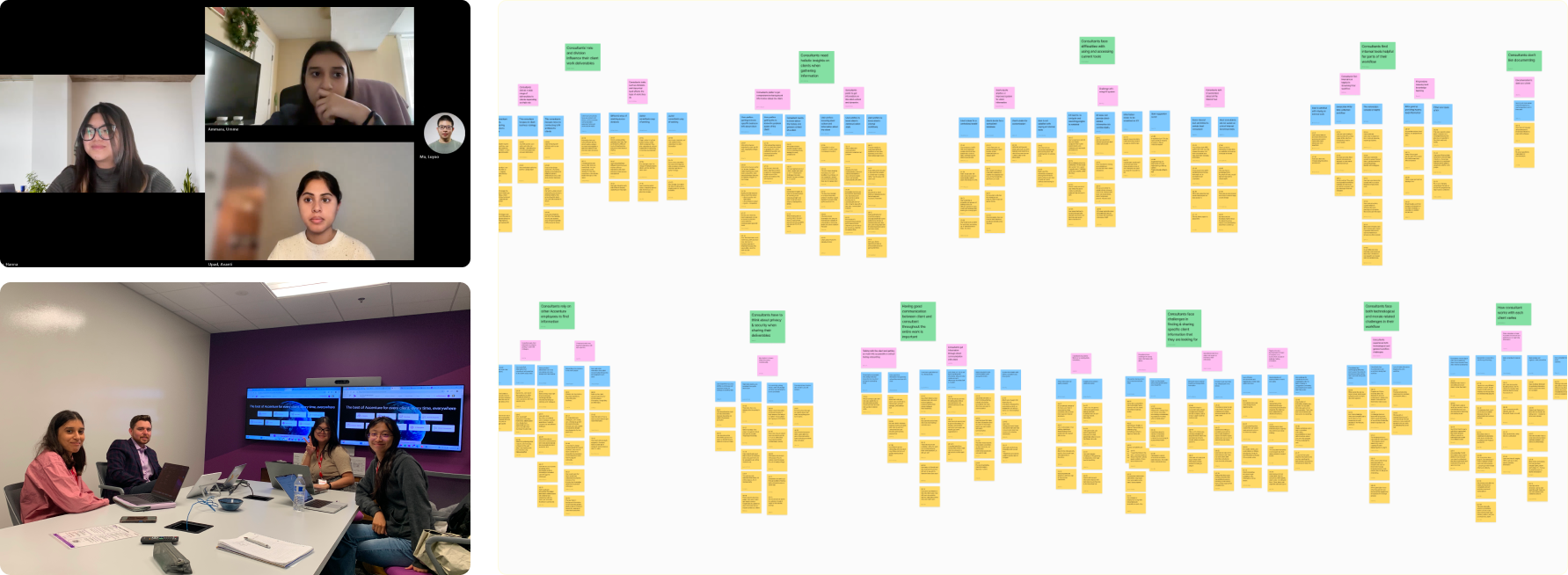
Research Findings
Finding and sharing client information is time-consuming.

To go into more detail with our findings, consultants’ roles and divisions significantly influence their workflows and the deliverables they produce for clients, meaning that there's no single protocol consultants follow. However, they often face challenges with accessing and using internal tools and are frequently unaware of all the resources available to them. Finding and sharing client information takes significant amount of time, with many consultants relying heavily on other Accenture employees to seek information. Client data privacy and security are critical concerns when sharing deliverables, further complicating the process. Due to the absence of a centralized system for sharing client information, consultants often have to redo research, leading to inefficiencies.
User Needs & Design Implications
Synthesizing our findings to prepare for the design stage.
By synthesizing and prioritizing all of our research, we came up with 8 main user needs that our solution needed to take into account. Then, we created 8 correlating design implications that our solution needed to include to follow address user pan points. This findings analysis served as the basis for the rest of our project.
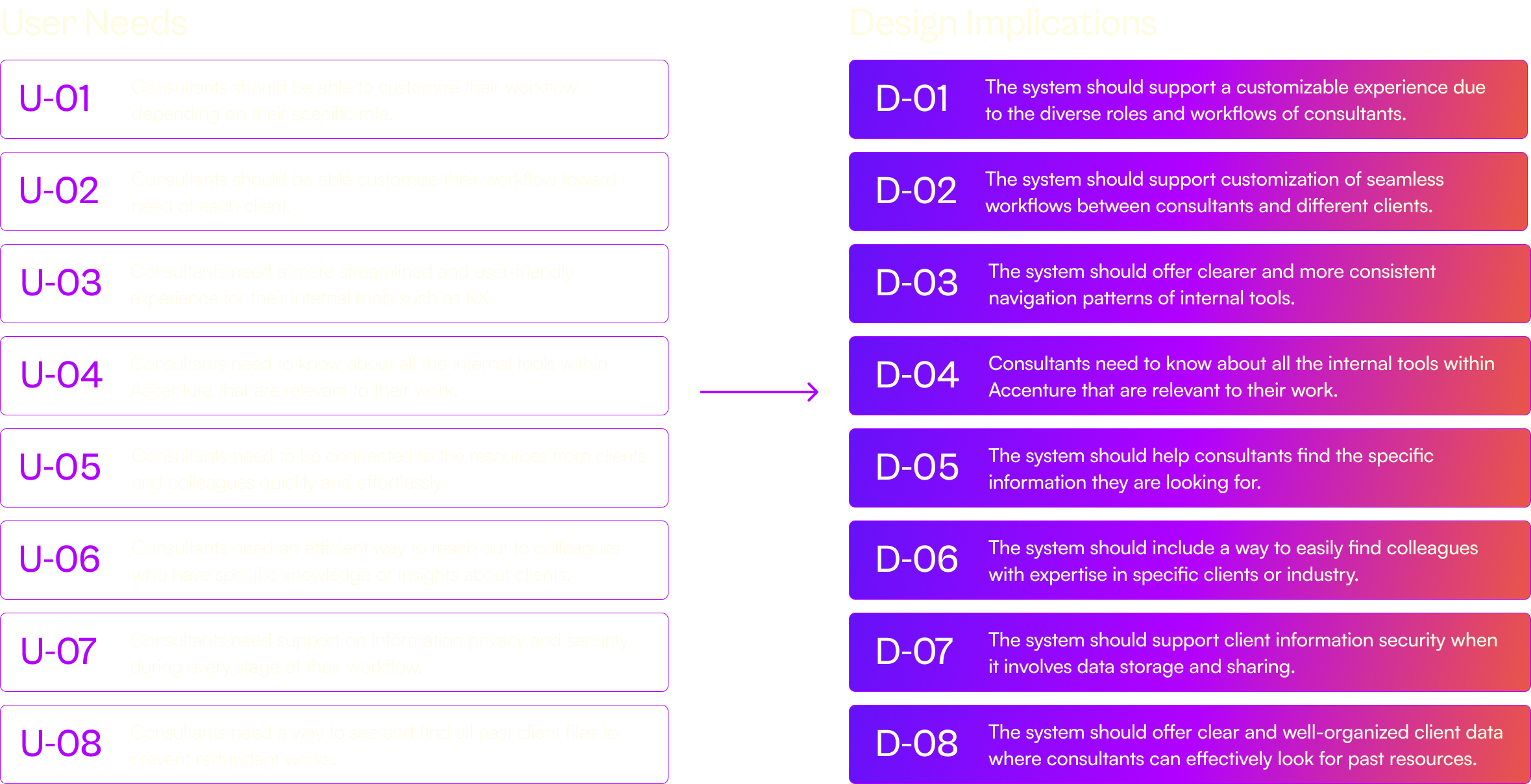
Personas
The New Consultant Vs. Experienced Manager
Based on user needs, we have created two personas that would utilize our solution, representing consultants at different levels within Accenture: an entry-level consultant and a managerial-level consultant. These personas capture the diverse challenges and requirements consultants face at different stages in their careers. By developing these personas, we can better understood our users’ goals, frustrations, and needs, allwng us to design solutions tailored to both persona's specific challenges.
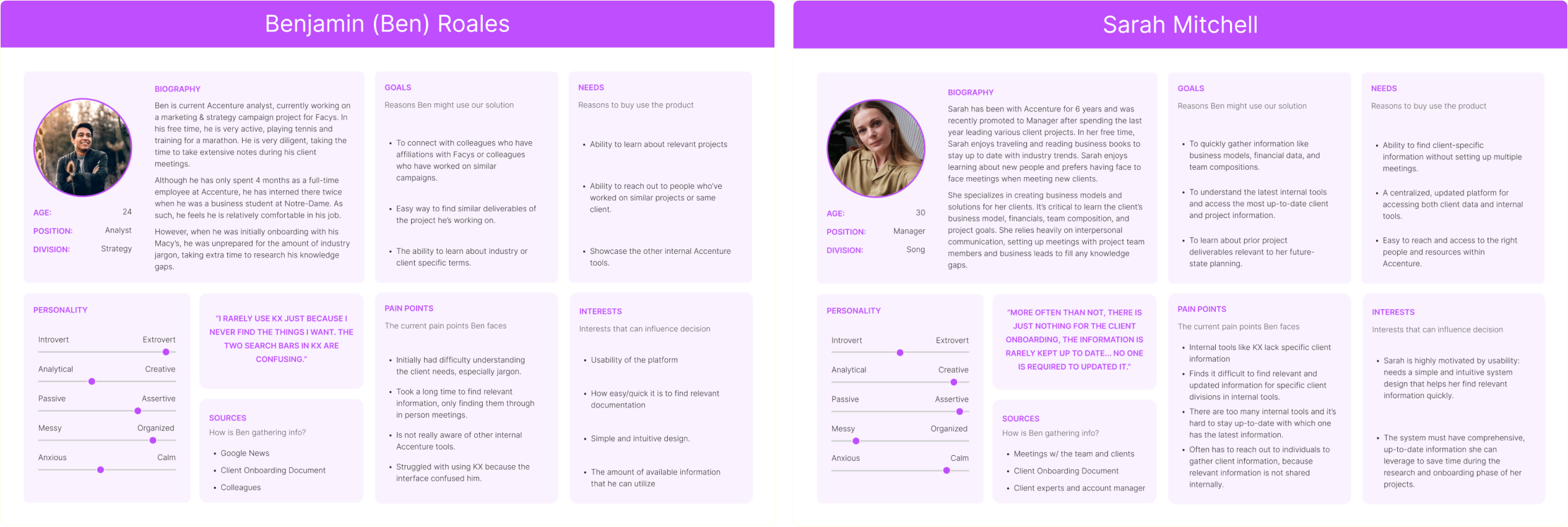
Jobs to be done
Honing on the specific actions needed to accomplish user goals
By understanding how they feel and behave during this process, we can better identify their ultimate goals and design solutions to meet them. Through our JTBD, we found that there was a need for a more streamlined process for connecting with colleagues, better internal tools for gathering information, and centralized platforms to improve efficiency and reduce frustrations.
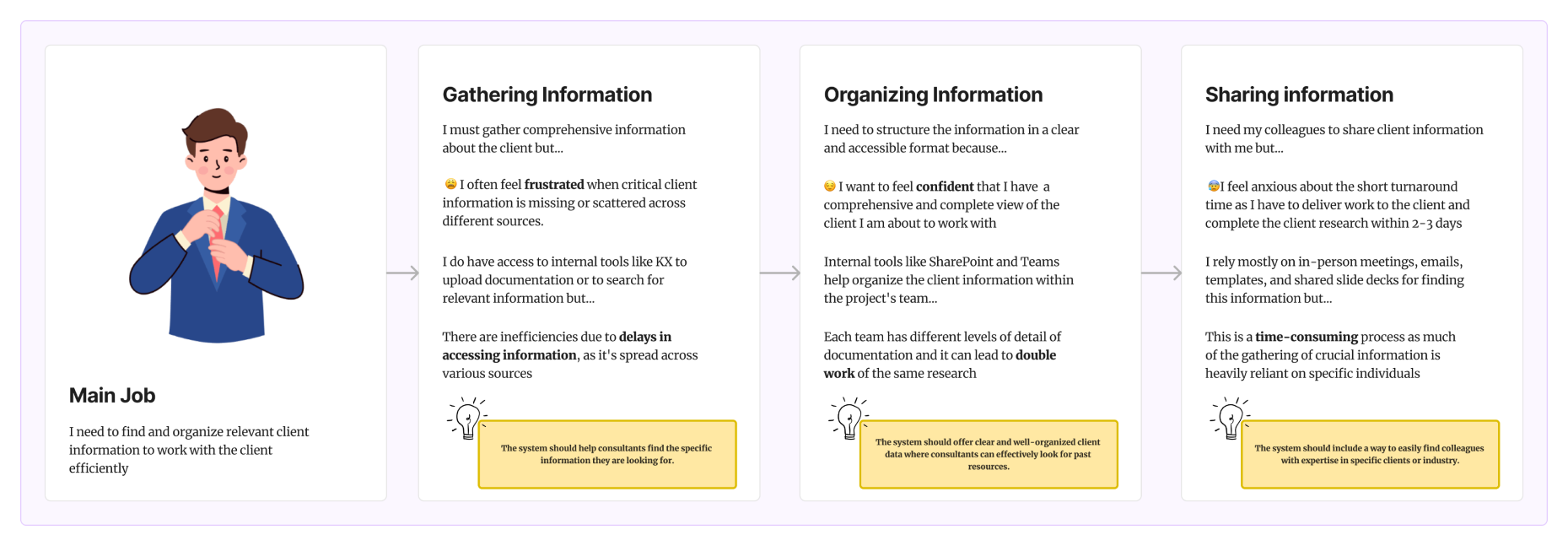
ideation
Utilizing user stories to highlight the specific actions consultants needed to preform.
To really hone in what experiences we should highlight in our experience, I led an activity to ideate user stories to focus on the specific goals a consultant would make when finding and sharing client information. Once we finalized our user stories into 6 major tasks–each correlating to a design implication–we sketched out concepts and tested it with users.
D-02, D-07, D-08
Search & Filter for relevant information
D-01, D-06
Access & Learn about the internal tools within Accenture
D-02, D-03
Contact or connect with other consultants
D-04, D-05
Uploading documentation
D-04
Remove sensitive client information from past work
D-04, D-05
Ability to request and share information
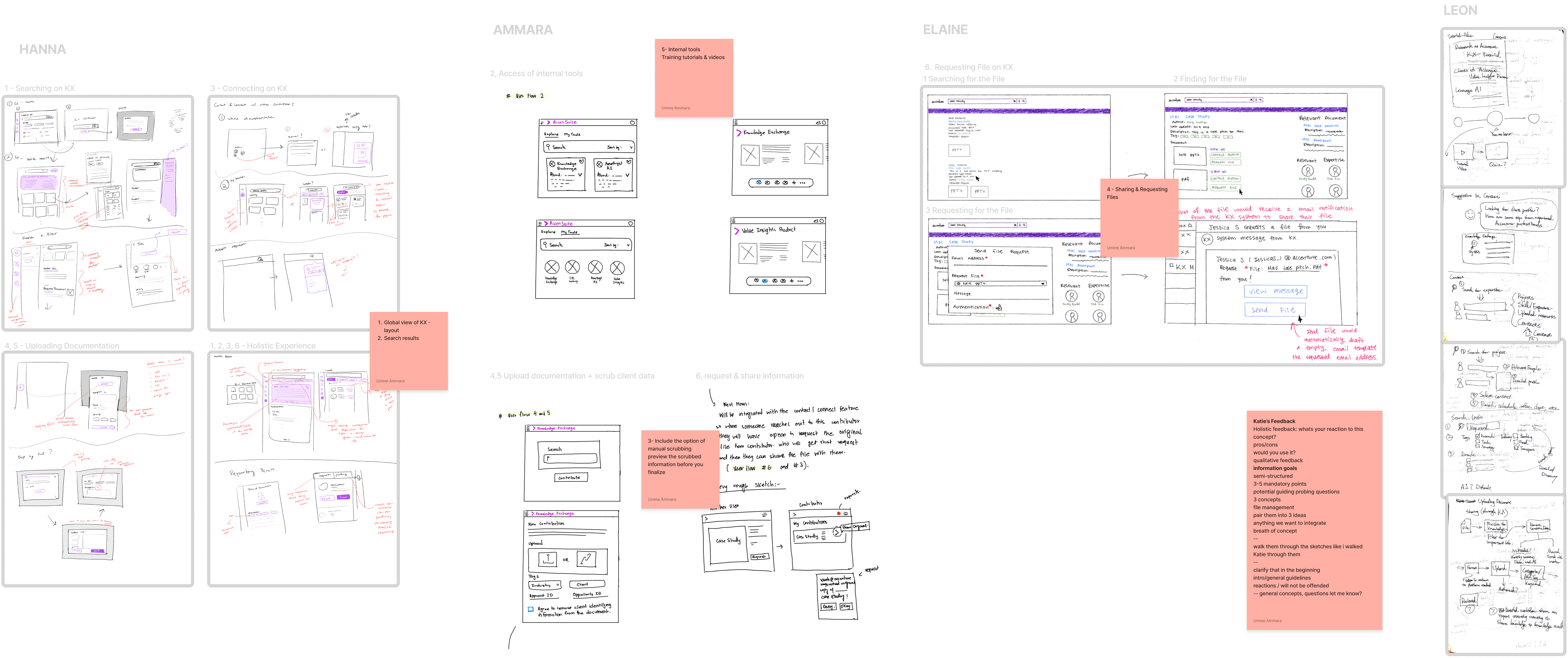
design thinking
Utilizing user stories to highlight the specific actions consultants needed to preform.
To really hone in what experiences we should highlight in our experience, I led an activity to ideate user stories to focus on the specific goals a consultant would make when finding and sharing client information. Once we finalized our user stories into 6 major tasks–each correlating to a design implication–we sketched out concepts and tested it with users.
D-02, D-07, D-08
Search & Filter for relevant information
D-01, D-06
Access & Learn about the internal tools within Accenture
D-02, D-03
Contact or connect with other consultants
D-04, D-05
Uploading documentation
D-04
Remove sensitive client information from past work
D-04, D-05
Ability to request and share information
Sorry, this page is currently under development :(
